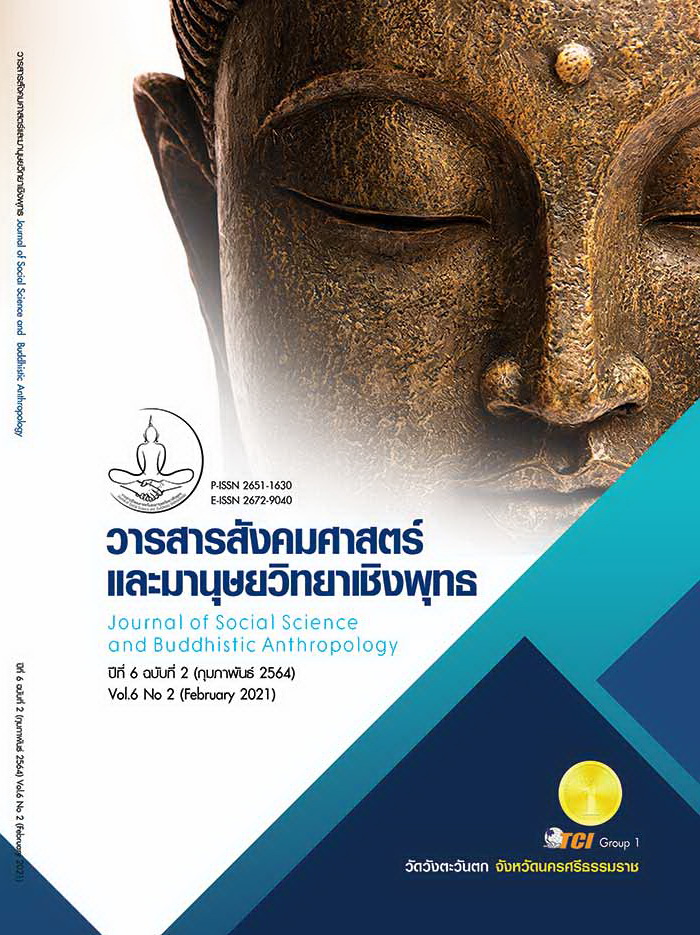A STUDY OF BUSINESS ENVIRONMENT, ENTREPRENEURSHIP AND DETERMINANT FACTORS TOWARD COMPETITIVE ADVANTAGE OF CERAMIC CLUSTER IN LAMPANG, THAILAND
Keywords:
Business Environment, Entrepreneurship, Business Networking, Innovation, Competitive AdvantageAbstract
The research article has two objectives 1) To study factors of business environment, entrepreneurship, business networking, innovation and competitive advantage of ceramic cluster in Lampang province. 2) To verify the consistency of the hypothesis model with empirical data of the causal factors affecting the competitive advantage of ceramic cluster in Lampang province. This research used mixed methods of qualitative and quantitative research. The quantitative research tool was a questionnaire. Samples were business owners or representatives, production supervisor and marketing department from 159 factories. Using stratified sampling of 159 people per group, total of 477 people. Then purposive sampling. Data were analyzed using descriptive statistics and structural equations with SEM technique. The qualitative research tool was structured interview. In-depth interviews with four key informants were analyzed by content analysis. The findings showed that 1) Factors of business environment, entrepreneurship, business network and innovation affect to competitive advantage. Factor of business environment have the direct effect to business network and co-influence with innovation, through which factor of competitive advantage. Factors of entrepreneurship, business network and innovation have the direct effect to competitive advantage. 2) The hypothesized structural equation model was consistent with the empirical data show that relationship model between theoretical structural equation model variables look like relationship model between empirical variables that is the theory can be used to explain the relationship between variables in the actual phenomenon of cluster ceramic Lampang. Moreover, the model and the parameters did not change when studying different target groups.
References
ฑัตษภร ศรีสุข. (2558). การศึกษาความสามารถในการแข่งขันของอุตสาหกรรมเครื่องสำอางไทยภายใต้กรอบอาเซียน. ใน ดุษฏีนิพนธ์บริหารธุรกิจดุษฎีบัณฑิต สาขาวิชาการบริหารธุรกิจ. มหาวิทยาลัยนเรศวร.
นพดล พันธุ์พานิช. (2561). กระบวนการเชิงกลยุทธ์ของธุรกิจระบบอัตโนมัติที่อำนวยความสะดวกแก่ผู้สูงอายุของวิสาหกิจขนาดกลางและขนาดย่อม สำหรับการเปลี่ยนแปลงสู่สังคมผู้สูงอายุในประเทศไทย. วารสารวิจัยมหาวิทยาลัยเวสเทิร์น มนุษยศาสตร์และสังคมศาสตร์, 4(3). 170-185.
บุญชนิต วิงวอน. (2560). อิทธิพลเชิงโครงสร้างของสภาพแวดล้อมธุรกิจ ภาวะผู้ประกอบการ และปัจจัยกำหนดที่มีผลต่อการดำเนินงานของธุรกิจครอบครัว ในเขตภาคเหนือตอนบนของประเทศไทย. ใน ดุษฏีนิพนธ์ปรัชญาดุษฎีบัณฑิต สาขาวิชาการจัดการ. มหาวิทยาลัยราชภัฎลำปาง.
พนิดา สัตโยภาส. (2560). ความสัมพันธ์เชิงสาเหตุระหว่างภาวะการประกอบการ ความสามารถทางการตลาด นวัตกรรม และกลยุทธ์ธุรกิจ ที่ส่งผลต่อความได้เปรียบในการแข่งขันของวิสาหกิจขนาดกลางและขนาดย่อม. ใน ดุษฏีนิพนธ์ปรัชญาดุษฎีบัณฑิต สาขาวิชาการจัดการ. มหาวิทยาลัยราชภัฎลำปาง.
มลทิพย์ บำรุงกิจ และคณะ. (2563). การศึกษาบุพปัจจัยที่มีอิทธิพลต่อความได้เปรียบในการแข่งขันของวิสาหกิจอุตสาหกรรมเซรามิกส์ ลำปาง. ใน รายงานการวิจัย. มหาวิทยาลัยเทคโนโลยีราชมงคลล้านนา ลำปาง.
ยุทธชัย ฮารีบิน และคณะ. (2559). ความสามารถด้านเครือข่ายและความสามารถเชิงนวัตกรรมของวิสาหกิจขนาดกลางและขนาดย่อม. วารสารนักบริหาร, 36(2), 79-88.
สำนักงานส่งเสริมวิสาหกิจขนาดกลางและขนาดย่อม. (2560). ประเมินแผนการส่งเสริม SMEs ฉบับที่ 4 (พ.ศ.2560-2564). กรุงเทพมหานคร: สำนักนโยบายและแผน สำนักงานส่งเสริมวิสาหกิจขนาดกลางและขนาดย่อม.
อาชวิน ใจแก้ว. (2561). การบูรณาการศักยภาพการผลิตเชิงกลยุทธ์ที่มีผลต่อความได้เปรียบในการแข่งขันของคลัสเตอร์วิสาหกิจกลุ่มล้านนา ในประเทศไทย. ใน ดุษฏีนิพนธ์ปรัชญาดุษฎีบัณฑิต สาขาวิชาการจัดการ. มหาวิทยาลัยราชภัฎลำปาง.
Comrey, A. L., & Lee, H. B. (1992). A first Course in Factor Analysis. New Jerser: Erlbaum.
Likert R. (1967). The Method of Constructing and Attitude Scale. New York: Wiley & Son.
Morris, M. H. & Kuratko, D. F. (2002). Corporate Entrepreneurship. Florida: Harcourt College Publishers.
Rovinelli, R. J., & Hambleton, R. K. (1977). On the use of content specialists in the assessment of criterion-referenced test item validity. Dutch Journal of Educational Research, 2(2), 49–60.
Zahra, S. A., & Gravis, D. M. (2000). International corporate entrepreneurship and firm performance: The moderating effect of international environmental hostility. Journal of Business Venturing, 15(5), 469-492.








